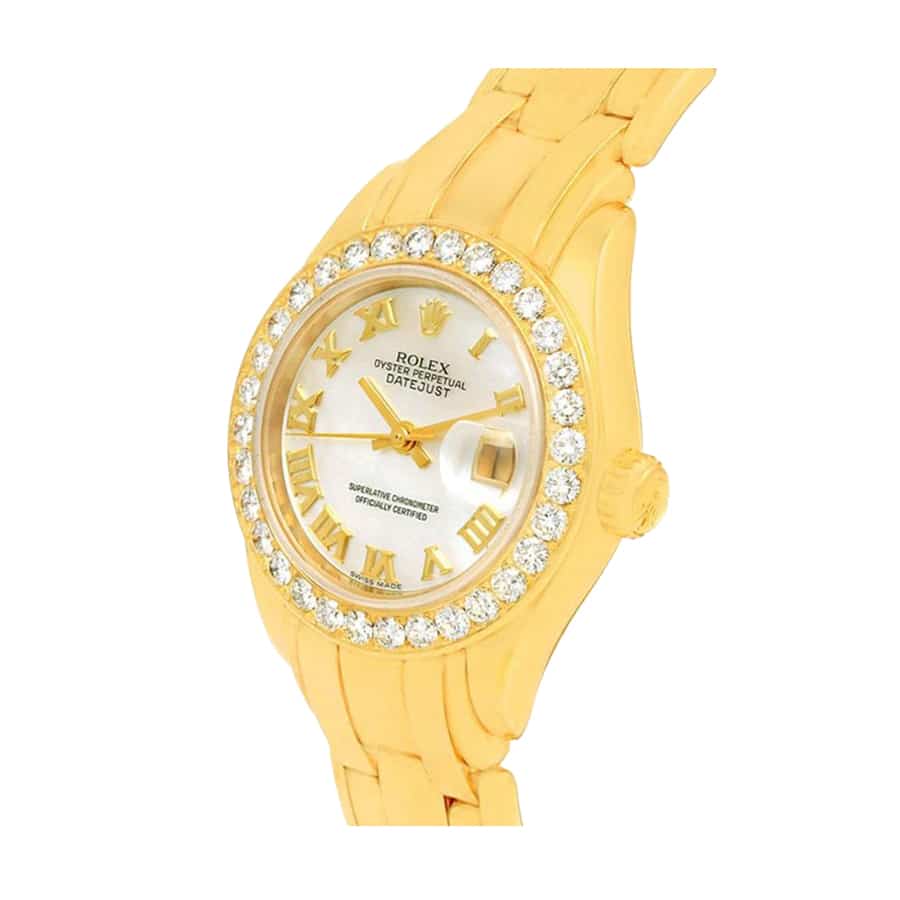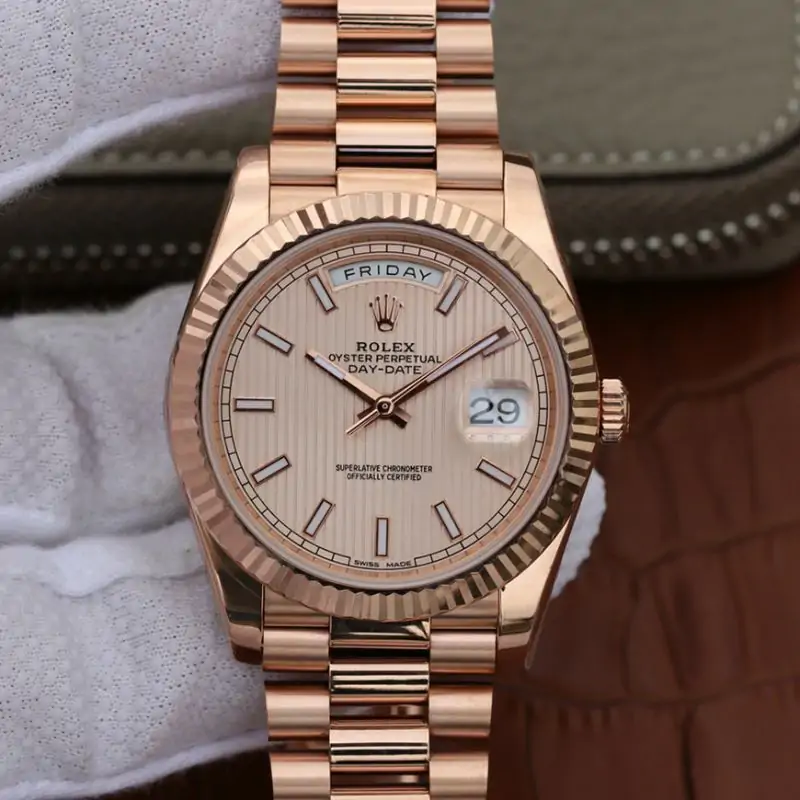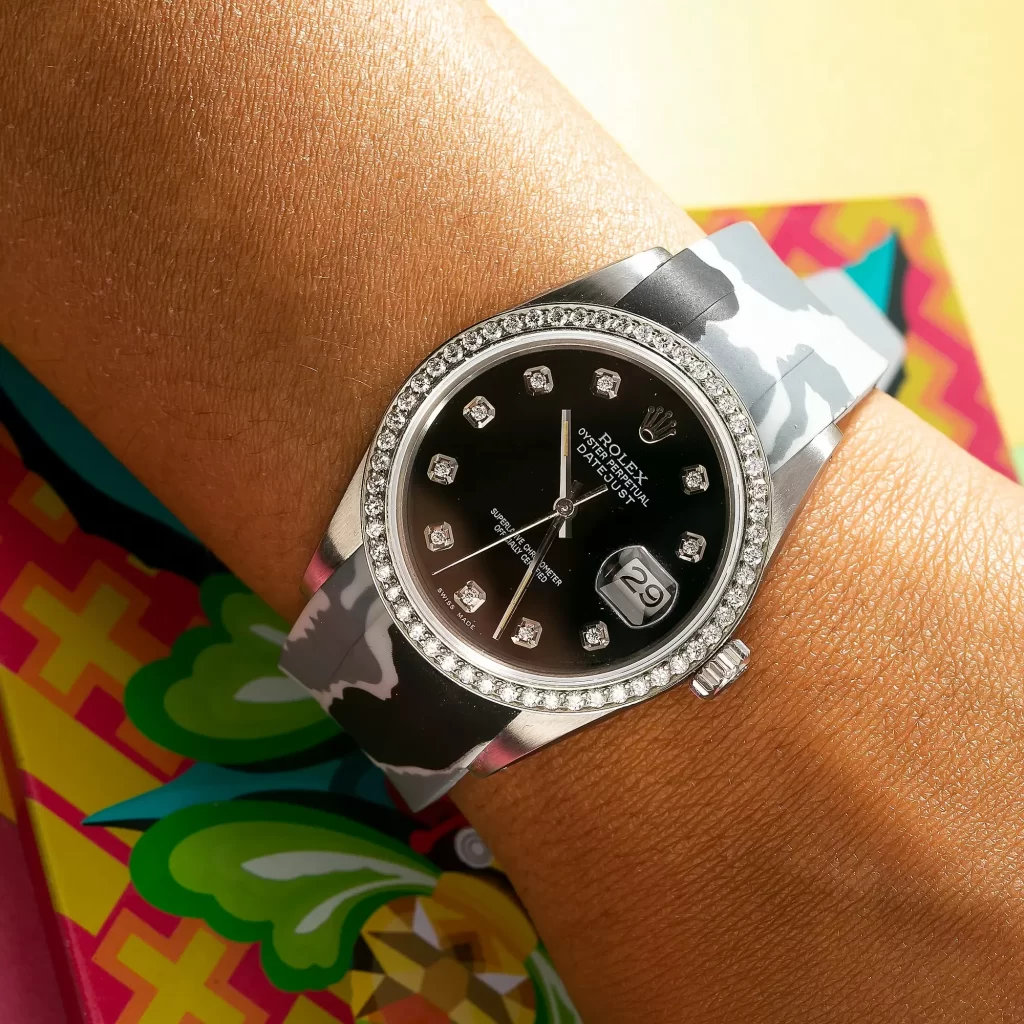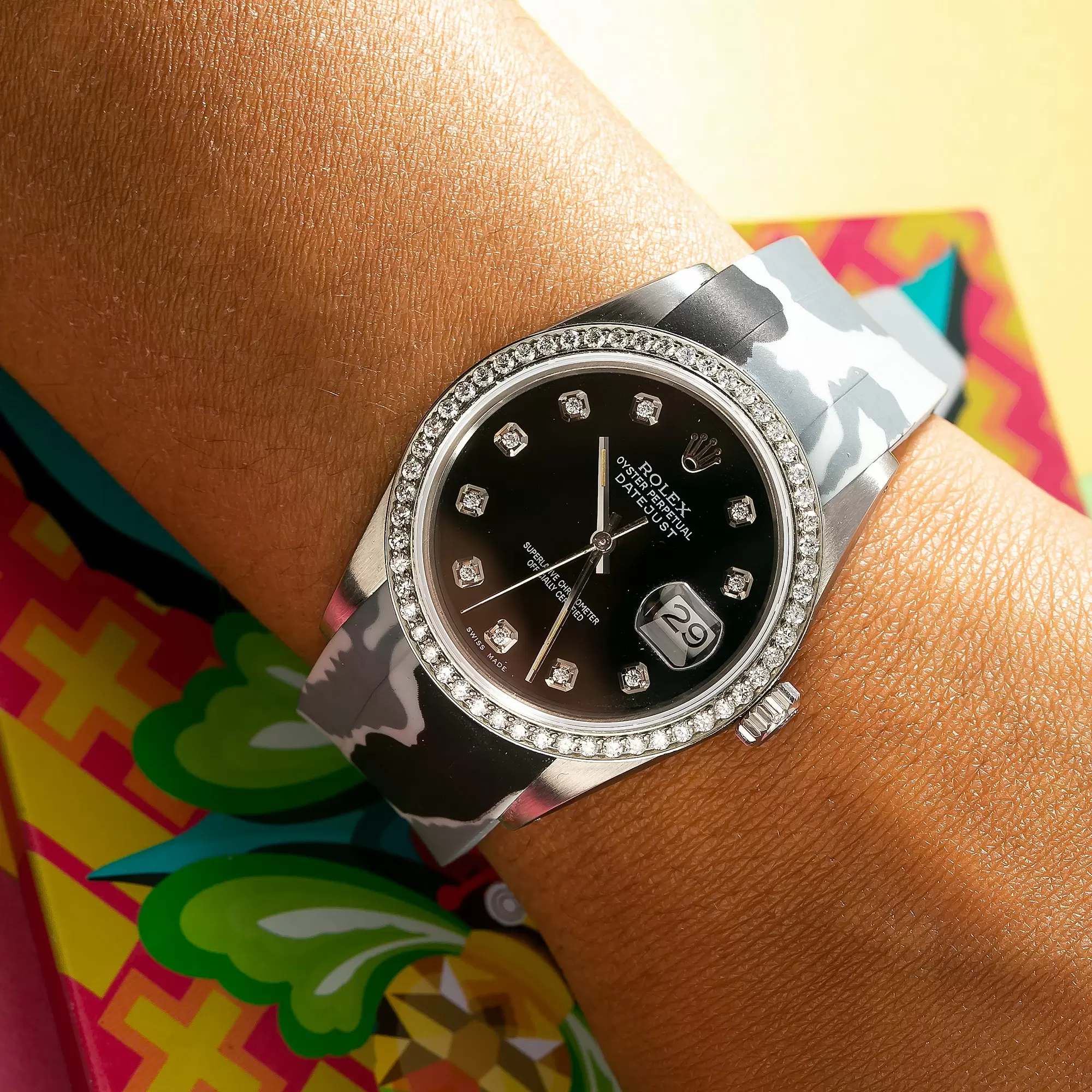A decade ago, Adam Golden, founder of Menta Watches, entered the industry with a different perspective. He recalls a time when he would evaluate certain historic yet undesirable watches based solely on their gold content, akin to a 19th-century prospector. Back then, the dominant trend revolved around the robust steel sport replica watches of the ’70s – icons like the Audemars Piguet Royal Oak, the Patek Philippe Nautilus, and the Vacheron Constantin 222. However, Golden observes a shift in the market’s interest towards even these classic models. “Prices have plateaued,” he notes. Nowadays, collectors lean towards what Golden terms as “jewellery watches” – watches bedazzled with diamonds, sapphires, precious metals, and pristine stone dials. Gold, once deemed gaudy, now exudes a sense of coolness. What was once primarily a female interest has now become widespread. “It’s literally everybody,” he remarks.
The ’80s epitomize this evolving taste in watchmaking. It was a decade when Swiss maisons engaged in an arms race to captivate their clientele not only with symbols of newfound affluence but also with bold designs. The ’70s saw the watch industry struggling due to the advent of quartz, which revolutionized watchmaking, making it cheaper and more accessible. In response, luxury brands in the ’80s unveiled models that elevated watches to fashionable accessories.
Piaget exemplified this trend with its Polo, a gold watch cleverly masquerading as a bracelet. Patek Philippe introduced the reference 3770 Nautilus in 1980, affectionately dubbed the “Nautellipse” by collectors for its fusion of the sporty Nautilus and the elegant Ellipse. Hublot emerged with a similar ethos, presenting its inaugural reference, the Classic Original, featuring a rubber strap attached to an all-gold case – a radical departure. “Eighties watches were optimistic about the future,” remarks Phillip Toledano, a knowledgeable collector of the era. “In the ’80s, nobody cared about the past.”
This forward-thinking mentality is evident in the daring designs of the period. Seiko collaborated with car designer Giorgetto Giugiaro to produce asymmetric watches for Aliens, while Omega crafted space-age Seamasters. Louis Vuitton unveiled its Monterey II in 1988, boasting a ceramic case and a screw shank protruding from 12 o’clock. Once overlooked, this model has now become highly sought after. Despite never having sold a single piece previously, Golden has moved six units in recent months. “Everyone is very design-oriented now,” he observes.

Indeed, collectors worldwide are once again drawn to the allure of ’80s Swiss extravagance. In 1986, IWC introduced the first ceramic watch, appealing to collectors seeking something distinct and valuable. Rolex’s reference 16758, featuring a full yellow gold case and the coveted “nipple” dial adorned with additional gold indices, emerged as one of the brand’s quintessential pieces of the era. As echoes of that opulent decade resound louder, Rolex has unveiled an all-gold GMT-II as a major release, while IWC and Audemars Piguet return to ceramic for their boldest and most coveted styles.
While these flashy, design-forward watches were once cherished by traditional collectors, a younger generation is now embracing them. Celebrities like Bad Bunny have contributed to the resurgence of ’80s models, making them some of the trendiest accessories.

As aficionados rediscover these replica watches and brands draw inspiration from this era, we witness a broader evolution of taste. Watch enthusiasts are moving beyond conventional sport models, embracing daring and distinctive designs. In doing so, they uncover exceptional watches from a decade when the watch industry was reinventing itself.

